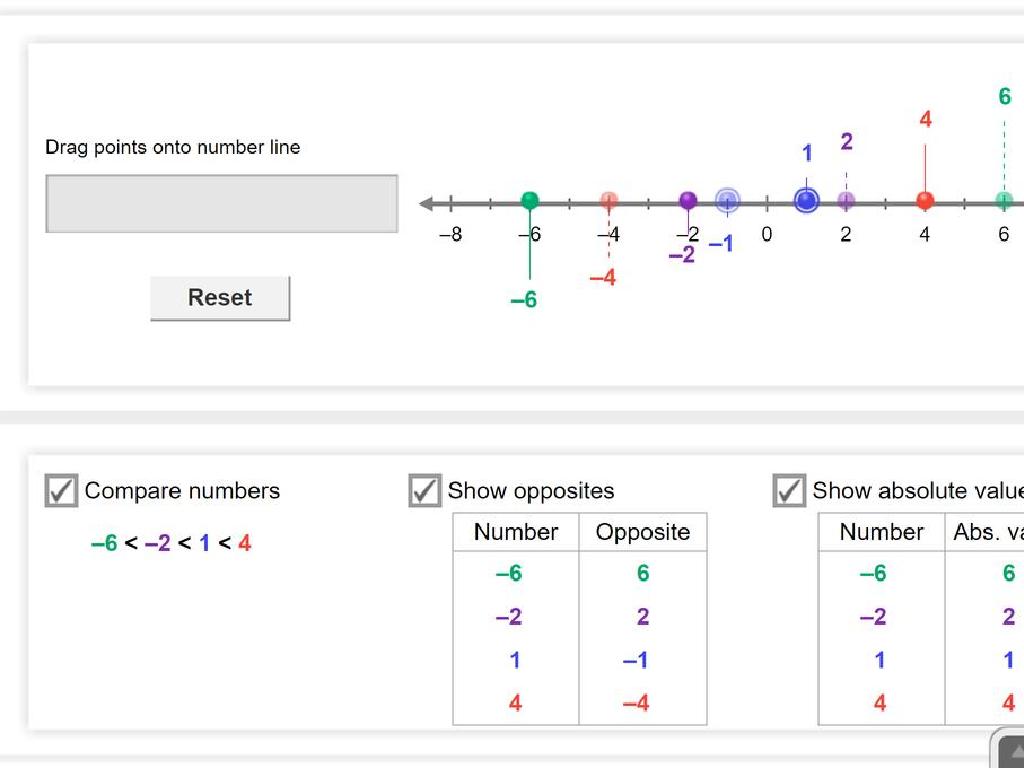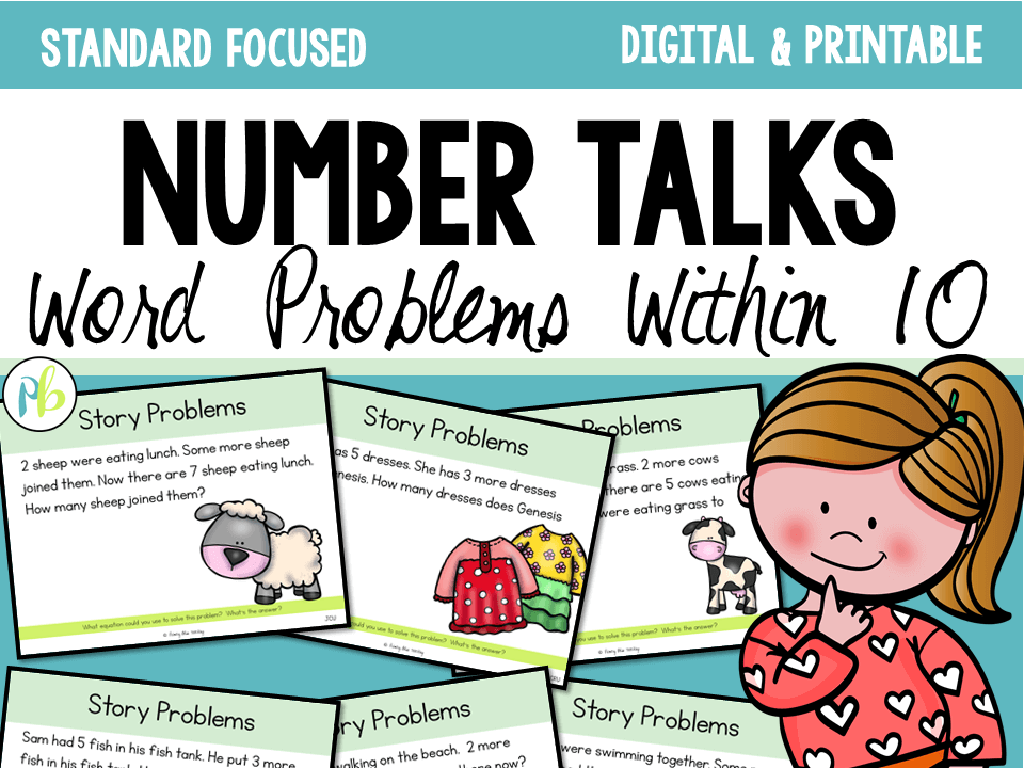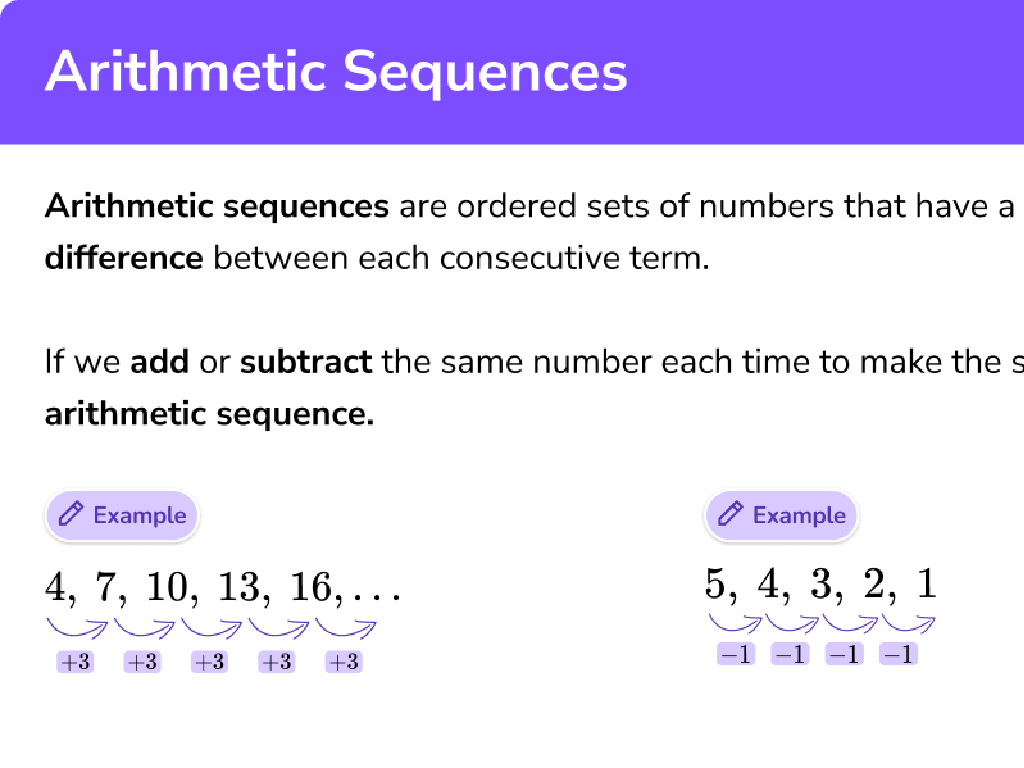Complete The Addition Sentence To Make Ten
Subject: Math
Grade: First grade
Topic: Addition Strategies Up To 10
Please LOG IN to download the presentation. Access is available to registered users only.
View More Content
Welcome to Addition: Making Ten!
– Becoming addition experts
– Learn to make 10 with numbers
– Combining numbers to total 10, like 5+5 or 6+4
– Use fingers to help count
– Hold up 10 fingers, put some down, and count the rest
– Practice with fun examples
– Example: If you have 7, how many more to make 10?
|
This slide introduces first graders to the concept of making ten using addition. Start by engaging the students with the idea that they are becoming ‘addition experts.’ Explain that understanding how to combine numbers to reach a total of ten is a fundamental math skill. Use interactive methods like counting with fingers to make the concept tangible and easier to grasp. Provide simple examples and encourage students to use their fingers to count how many more they need to add to a given number to make ten. This hands-on approach helps solidify their understanding of addition and sets the foundation for more complex math concepts.
Understanding Addition: Making Ten
– Addition combines numbers
– Adding finds total amounts
– Using addition to make ten
– When we add numbers that equal ten, like 7 + 3.
– Examples with objects
– Imagine 5 apples and 5 oranges together make 10 fruits.
|
This slide introduces the concept of addition as a way to combine numbers to find out the total. Emphasize that addition is simply the process of bringing numbers together to see how much they amount to when combined. Use simple, relatable examples like combining different sets of objects to make ten. For instance, if we have 7 pencils and we want to make ten, we need to figure out how many more pencils to add. By using objects like fruits, toys, or fingers, children can visually and practically understand the concept of making ten. Encourage the students to use their fingers or classroom objects to practice making ten with different number combinations.
Making Ten with Numbers
– Understanding the number 10
– Ten is a building block in math.
– Different pairs that make 10
– Like 5 + 5, 6 + 4, or 8 + 2.
– Practice making 10 with examples
– Use objects like blocks or fingers to add up to 10.
– Making 10 is fun and useful
|
This slide introduces the concept of making ten, which is a fundamental addition strategy for first graders. Emphasize that the number 10 is a cornerstone in our number system and is particularly special when it comes to addition. Show various combinations that add up to 10, and encourage students to memorize these pairs as they are useful building blocks for future math skills. Provide examples using visual aids like counting blocks or fingers to help students understand and practice the concept. Reinforce that making 10 is not only a key math skill but can also be a fun activity with games and interactive exercises.
Number Pairs that Make Ten
– Discover pairs that total 10
– Numbers that add together to become 10
– Examples: 1+9, 2+8, 3+7
– 4+6, 5+5… Can you think of more?
– Use fingers to find pairs
– Hold up 10 fingers, put some down, how many are left?
– Practice with fun activities
|
This slide introduces first graders to the concept of number pairs that add up to 10. Start by explaining that certain numbers can be combined to make a total of 10. Use visual aids like fingers or counters to help students understand the concept. Provide examples such as 1+9, 2+8, and 3+7, and ask students to come up with more pairs on their own. Encourage them to use their fingers by holding up 10 and putting some down to find the pairs. Incorporate engaging activities like matching games or number pair hunts to reinforce the concept. The goal is for students to become comfortable with these number pairs as they form the foundation for future math skills.
Making Ten: Complete the Addition Sentence
– Understanding ‘Making Ten’
– ‘Making Ten’ helps us add numbers quickly.
– Using addition to make ten
– Find the number that adds with another to total ten.
– Example: 4 + ___ = 10
– What number do we add to 4 to get 10?
– Practice completing sentences
– Try with different numbers to make ten.
|
This slide introduces the concept of ‘Making Ten’, a fundamental addition strategy for first graders. Start by explaining that ‘Making Ten’ means finding two numbers that add up to ten. Use simple examples like 4 + ___ = 10 and ask students what number is needed to complete the sentence. Encourage them to use their fingers or counters to find the answer. Provide several examples and allow the students to practice with different starting numbers, reinforcing the concept of ‘Making Ten’. This strategy builds a strong foundation for mental math and helps students become more comfortable with addition.
Let’s Practice Together: Making Ten!
– I’ll show an addition sentence
– You help me complete it
– Let’s solve the first one together
– Example: 7 + __ = 10, what number goes in the blank?
– Ready for more practice?
|
This slide is designed to engage first-grade students in a collaborative activity to practice completing addition sentences that sum up to ten. Start by showing an incomplete addition sentence and encourage the students to participate by figuring out the missing number. Use simple examples like ‘7 + __ = 10’ and guide them to understand that the missing number is the amount needed to reach ten. After solving the first one together, check for understanding and then proceed with more examples, increasing in difficulty if appropriate. Provide positive feedback and ensure that each student feels comfortable and excited to participate. This activity will help reinforce their understanding of addition and the concept of making ten.
Your Turn to Try: Making Ten!
– Complete the addition sentences
– Use objects to help count
– Count pencils or blocks to reach 10
– Find pairs that add up to 10
– Example: 5 + ? = 10, what number is missing?
– Practice makes perfect
|
This slide is an interactive activity for students to practice completing addition sentences with the sum of 10. Encourage students to use physical objects like pencils or blocks to help them visualize and count. Provide examples of pairs that make 10, such as 5 and 5, 6 and 4, or 7 and 3, and ask them to find the missing number in addition sentences. Reinforce the concept that different pairs of numbers can add up to 10 and that practice will help them become quicker at identifying these pairs. During the activity, walk around the classroom to assist students who may need help and to encourage participation.
Class Activity: Addition Bingo
– Play Bingo with number pairs
– Complete row, column, or diagonal
– Shout ‘Bingo!’ when you win
– Have fun learning addition!
|
This interactive class activity is designed to help first graders practice their addition skills in a fun and engaging way. The teacher will prepare Bingo cards with different number pairs that add up to ten in each square. As numbers are called out, students will cover the corresponding number pair on their card. The goal is to find number pairs that add up to ten and complete a row, column, or diagonal. When a student achieves this, they shout ‘Bingo!’ This game helps reinforce the concept of making ten and encourages quick mental addition. Possible variations of the activity could include using different themes for the Bingo cards, pairing students to work together, or offering small rewards for winners to keep the game exciting.
Great Work on Making Ten!
– Congratulations on learning to make 10!
– Practice is key – continue at home!
– Use objects to help count
– Count pencils or toys to add up to 10
– Share your learning with family!
– Teach siblings or parents how to make 10
|
This slide is meant to congratulate the students on their achievement in learning addition strategies to make ten. It’s important to encourage them to keep practicing these skills outside of the classroom to reinforce their understanding. Suggest that they use everyday objects like pencils or toys to practice adding different amounts together to reach ten. Additionally, involving family members in their learning process can be a fun way to share their new knowledge and further solidify their understanding. As a teacher, provide a few simple activities or worksheets that they can take home to practice.






